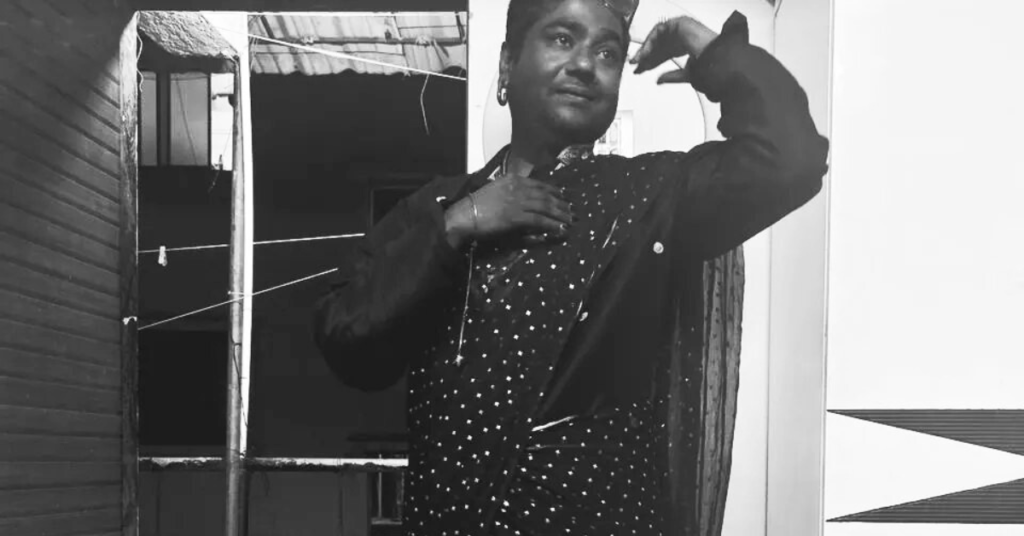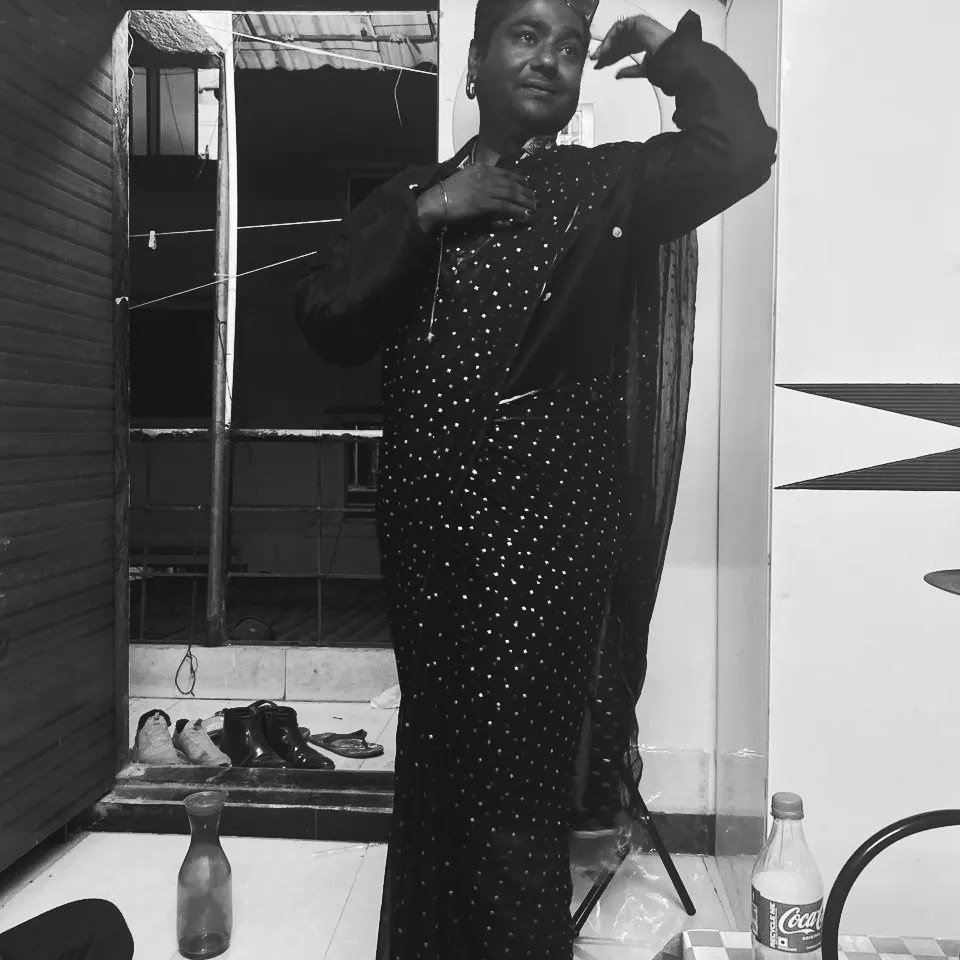
#LeoStylo #Lz6
Fashion through my eyes
Sunita Kukreti, a HR professional, recounts how an opportunity to write about fashion opened for her avenues to rediscover the term and its meaning for herself
Tring tring! I received a call one Thursday from a Jio number. A seductive voice from the other end spoke to me. It belonged to none other than Babu Bhai aka Jacob Nipun Augustine, a very dear friend of mine. Jacob told me that he is working on a fashion magazine which he plans to launch online, titled Leo Stylo. I was really impressed that finally my chindi chor (a derogatory word) friend is on his way become someone now. However, I got the shock of my life when he asked me to write an article for him that too on a completely alien subject – fashion!
Well, the reason I agreed to pen it down was the logical and rationale explanation of the term ‘fashion’ from him. Fashion is not about glamour. It’s not about only models. It’s not only about expensive clothing. It’s not about perfect figure flaunting the designer clothes. Rather, fashion is limitless; it’s about comfort, freedom, loving yourself in what you wear, finding beauty in ugliness as well. He asked me to look at fashion from an HR professional’s point of view.
A little research on the subject, I could find few facts for all of you. It’s important to know the roots first: History of Indian Clothing.
India’s recorded history of clothing can be traced back to the 5th millennium BC in the Indus Valley civilization where cotton was spun, woven and dyed. Bone needles and wooden spindles have been unearthed in excavations at the site. The cotton industry in ancient India was well developed, and several of the methods survive until today. Herodotus, an ancient Greek historian, described Indian cotton as, “ wool exceeding in beauty and goodness that of sheep.” Indian cotton clothing was well adapted to the dry, hot summers of the subcontinent. The grand epic Mahabharata, composed by about 400 BC, speaks of Lord Krishna staving off Draupadi’s disrobing by supplying an unending sari upon her. Most of the present knowledge of ancient Indian clothing comes from rock sculptures and paintings in cave monuments such as Ellora. These images show dancers and goddesses wearing what appear to be a dhoti wrap, a predecessor to the modern sari. The upper castes dressed themselves in fine muslin and wore gold ornaments. The Indus civilization also knew the process of silk production. Recent analysis of Harappan silk fibers in beads have shown that silk was made by the process of reeling, a process known only to China until the early centuries AD.
Evidence from the 1st century AD shows some cultural exchanges with the Greeks. Indo-Greek influence is seen in the Greco-Buddhist art of the time. The Buddhas were portrayed as wearing the Greek himation, which is the forerunner of the modern saṃghāti that forms a part of the Kasaya of Buddhist monks. During the Maurya and Gupta period, the people continued to wear the three-piece unstitched clothing as in Vedic times. The main items of clothing were the Antariya made of white cotton or muslin, tied to the waist by a sash called Kayabandh and a scarf called the Uttariya used to drape the top half of the body.
New trade routes, both overland and overseas, created a cultural exchange with Central Asia and Europe. Romans bought indigo for dyeing and cotton cloth as articles of clothing. Trade with China via the Silk Road introduced silk textiles into India. The Chinese had a monopoly in the silk trade and kept its production process a trade secret. However, this monopoly ended when, according to legend, a Chinese princess smuggled mulberry seeds and silkworms in her headdress when she was sent to marry the king of Khotan (present day Xinjiang). From there, the production of silk spread throughout Asia, and by AD 140, the practice had been established in India. Chanakya’s treatise on public administration, the Arthashastra written around 3rd century BC, briefly describes the norms followed in silk weaving.
Changes: From Vedic to contemporary times
In India, women’s clothing varies widely and is closely associated with the local culture, religion and climate.
Saris worn with choli tops are the traditional Indian clothing for women in the north and the east. These areas also have a tradition of a long skirt called a lehenga or pavada worn with choli and a dupatta scarf to create an ensemble called a ghagra choli; or salwar kameez suits. South Indian women traditionally wear sari and children wear pattu langa. Saris made out of silk are considered the most elegant. Mumbai, formerly known as Bombay, is one of India’s fashion capitals. In many rural parts of India, traditional clothing is worn. Women wear sari, a long sheet of colourful cloth, draped over a simple or fancy blouse. Little girls wear pavada. Both are often patterned. Bindi is a part of woman’s make-up. Indo-western clothing is the fusion of Western and subcontinental fashion. Other clothing includes churidar, gamucha, kurti and kurta, and sherwani.
The traditional style of clothing in India varies with male or female distinctions. This is still followed in the rural areas, though is changing in the urban areas. Pre-pubescent girls wear a long skirt, called langa/pavada in Andhra, and a short blouse, called a choli.
For men, traditional clothes comprise of achkan/sherwani, bandhgala, lungi, kurta, angarkha, jama and dhoti or pajama. Additionally, recently pants and shirts have been accepted as traditional Indian dress by the Government of India.
Avenues of contemporary trends
The industry is matching its speed with the high pace of evolving fashion trends of the 21st century. The inclination towards western clothing has increased in the youth, especially in the metro cities of the country. Indian Film industry plays an important role in reflecting these global trends and contemporary changes towards the home audience. Revival of the ethnic wear and Bollywood fashion post-independence has a great significance and demands a detailed study in its own right.
As a part of larger revival movement in the Indian textile industry, Ritu Kumar, a Kolkata-based designer and textile print-expert, started working on reviving the traditional hand block printing techniques of Bengal. She made it a part of the fashion industry by establishing ‘ethnic chic’. She opened her first boutique in Delhi in 1966. In 1973, she first showcased the Zardozi embroidery in her garments, which had its origins in the royal costumes dating back to the Mughal era. This instance initiated the revival of this lost art in contemporary fashion. In time, embroidery became a prominent feature in Indian wedding attires, and also one of the country’s biggest fashion exports. This was a period of revival, where various organizations, NGOs and indicuals were involved in reviving traditional Indian techniques, in weaving, printing, dyeing or embroidery, including ikat, patola (double ikat), bandhani (tie-dye) and shisha (mirror embroidery).
An early trendsetter in fashion was Bollywood (Hindi cinema), where costume designers like Bhanu Athaiya started experimenting with film fashion in the 1960s. Athaiya started working on period costumes in Sahib Bibi Aur Ghulam (1962) and Amrapali (1966), though she went on to introduce varied trends through Teesri Manzil (1966), Chalte Chalte (1976), Karz (1980) and Chandni (1989). These were soon followed by the mass market. Also, situations and themes in Indian cinema became westernised, making way for the display of diverse fashion. Over the years, some popular Bollywood trends that have amassed recognition among consumers are Madhubala’s Anarkali-look with kurtas and churidars in Mughal-e-Azam (1960), purple embroidered sari worn by Madhuri Dixit in Hum Aapke Hain Koun…! (1994), Rani Mukherji’s short kurti-suits in Bunty Aur Babli (2005), Veer Zaara suits and blouses from Parineeta. This comes besides various fashion interpretations of the sari in films like Chandni (1989) with Sridevi, Main Hoon Naa (2004) with Sushmita Sen and Dostana (2008) with Priyanka Chopra. All these styles became fashion trends.
Modern Indian women in bigger cities may wear both western and Indian wear depending on the occasion, as seen in these photos of actress Ameesha Patel. However, in recent decades, with increasing exposure to the West, ethnic wear’s influence is no longer as strong as in previous decades. By the 2000s, with rise in the Indian diaspora around the world and the non-resident Indians, Bollywood continues to exert far greater influence on the fashion sensibilities of Indians around the world.
Personally, for me fashion is still something that gives me comfort to work and look beautiful too. However, despite a typical Indian figure that does more justice to Indian ethnic wear and fusion wear than any western wear, I continue to work on my figure imagining myself in a beautiful red short dress. Hopefully, I will be able to carry it off with the same élan.

